A Little Help Here: Many Wading Birds in State Now Considered Species of Concern
Spend any time around a marsh, and you’ll come across a familiar sight: elegant, long-legged birds wandering among the grasses or hunting in the shallow water. These birds – herons and egrets – are some of the wetlands’ most iconic species. They belong to a group known as wading birds, which includes cranes, egrets, herons, storks, spoonbills, and ibises.
Wading birds have physical and behavioral adaptions for living in wetland ecosystems, like extra-long legs to help keep feathers dry when wading through the water; toes that are thin and splayed to disperse their weight and prevent them from sinking in the mud; and bills designed for spearing fish or probing the mud for insects.
Most wading birds nest in colonies, a strategy that gives each individual a better chance of escaping an intruding predator while tending to its nest. These nesting colonies are usually made up of different species of wading birds and are often shared with other water-associated birds, like gulls and cormorants, as suitable nesting sites are increasingly in short supply. To help ensure reproductive success, these birds typically select nest sites in areas that are secluded from the mainland and its host of mammalian predators; within elevated areas to reduce the likelihood of nest flooding; and among vegetation that conceals adults and young while on the nest.
New Jersey’s wading birds have experienced shifts in nesting abundance and distribution statewide, and many are now considered species of concern. Ongoing surveys indicate an overall decline in the number of nesting individuals and the number of active wading bird colonies statewide. Habitat loss associated with coastal development and increases in flooding within nesting areas are major concerns for these species.
Sturgeon Island and Gull Island, located just north of The Wetlands Institute in the Seven Mile Island Innovation Lab, are crucial nesting areas hosting more than 27% of all nesting wading birds in the state, based on statewide aerial surveys conducted in 2018. It is likely that the wading bird colony at the Stone Harbor Bird Sanctuary joined these colonies when they left the sanctuary and then Armacost Park.
Nesting areas on these islands were created more than 70 years ago through the placement of dredged material on the marsh during operations to dredge the New Jersey Intracoastal Waterway. Wading bird species currently nesting on these islands include great egret, snowy egret, glossy ibis, black-crowned night heron, tricolored heron, and little blue heron. Historically, cattle egrets and yellow-crowned night herons were observed nesting in these colonies as well.
Scientists at The Wetlands Institute are studying the nesting habits and success of wading birds on Gull and Sturgeon islands to understand nesting habitat preferences, causes and timing of nest loss, and changes in species abundance and distribution within and between seasons to better inform species conservation actions, as well as habitat management and enhancement plans.
Studying these birds is no easy task but is necessary with limited information on nesting habits and success for these colonies. The dense vegetation at these sites limits detection of nesting birds from a distance, so trained staff must carefully survey and monitor pairs within the nesting area and limit the amount of time in the colony to reduce disturbance.
Results from monitoring efforts during the 2019 and 2020 nesting seasons (April-August) show significant differences in nest success between nesting colonies, with the smaller nesting areas on Sturgeon Island experiencing lower nest success than the larger nesting areas on Gull Island. Nesting areas on Sturgeon Island tend to be closer to the water’s edge and at lower ground elevation compared to the Gull Island nesting areas. The small size of the nesting areas, low elevation and proximity to the water’s edge leave nests on Sturgeon Island more vulnerable to tidal flooding and predation.
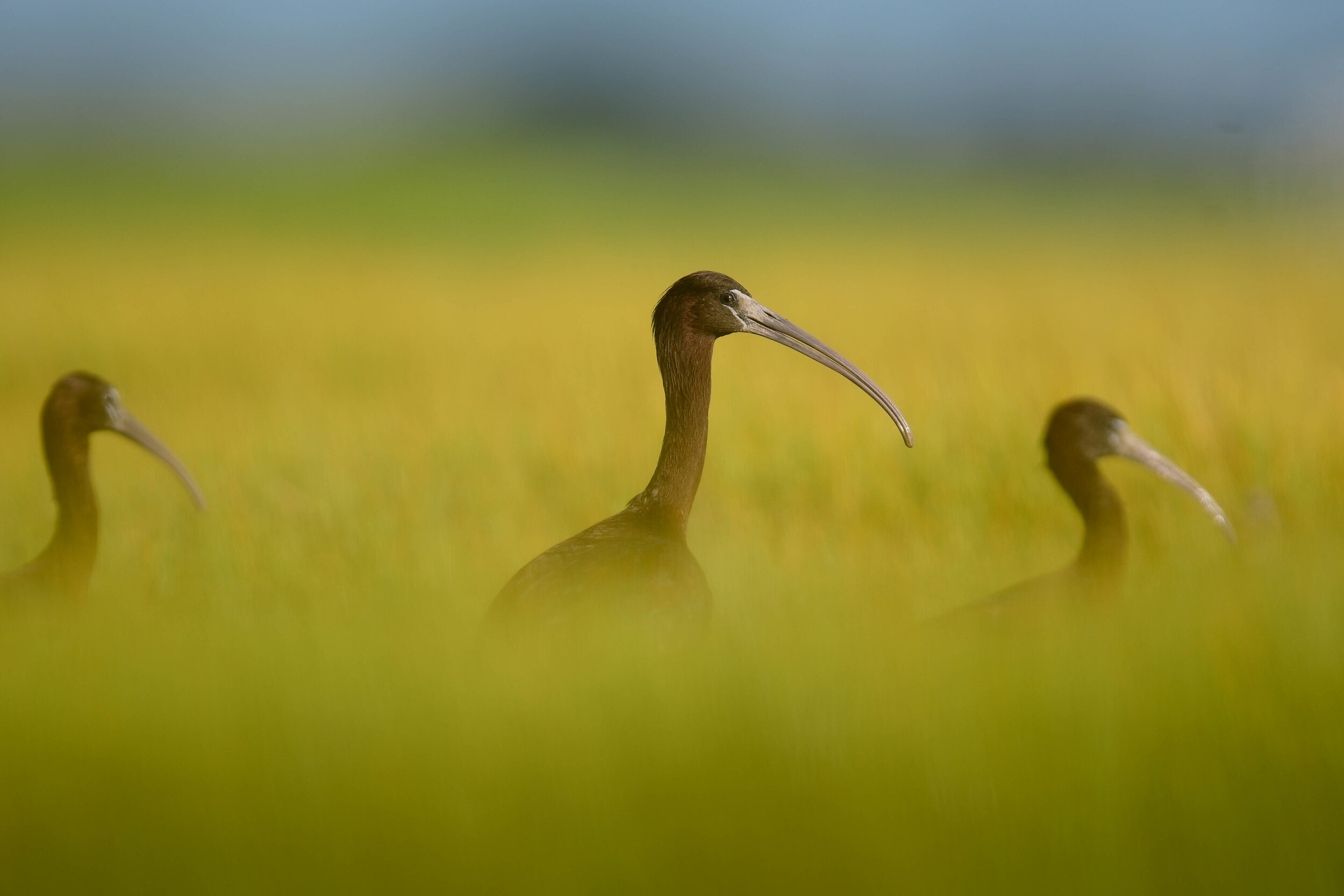
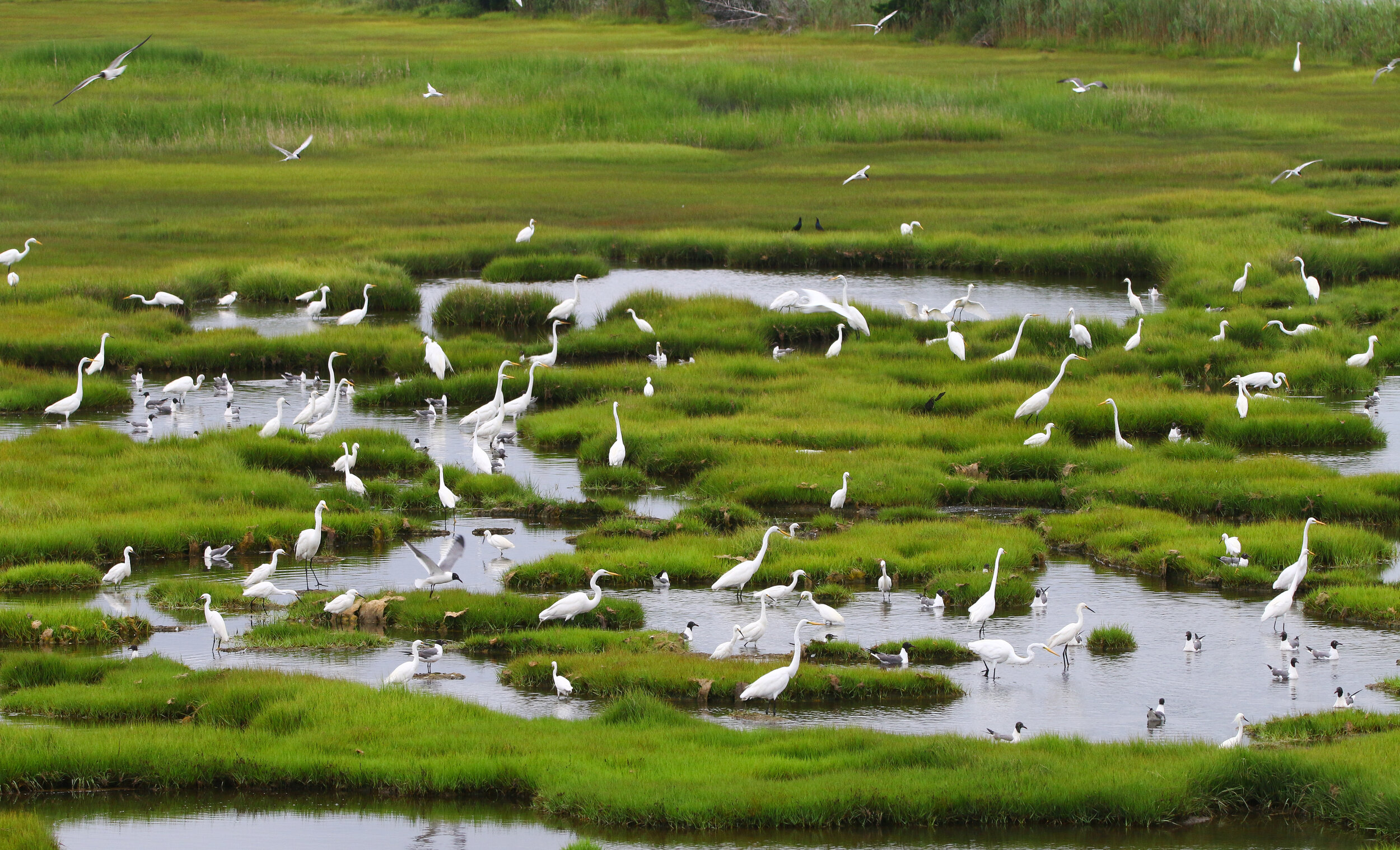
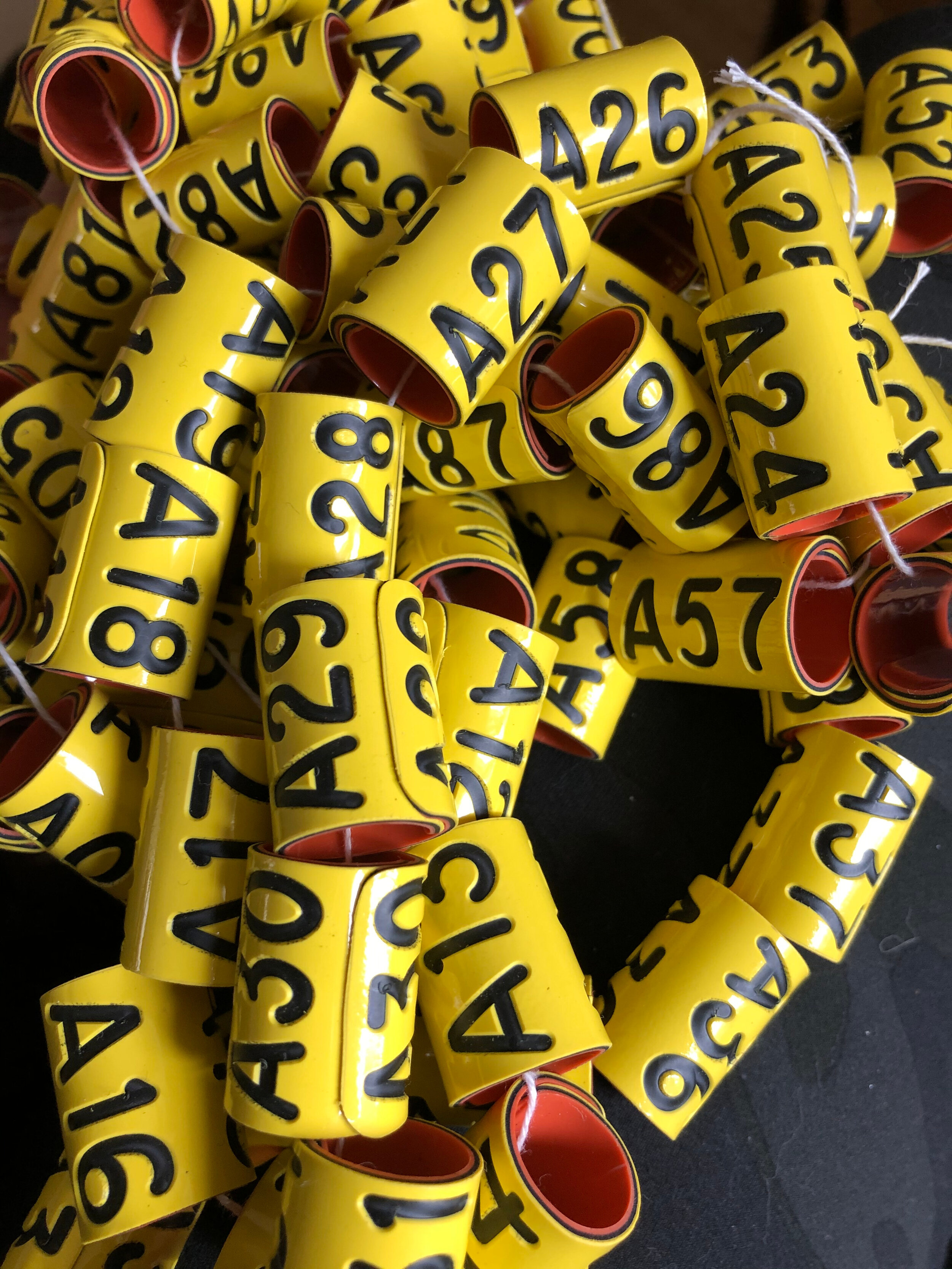
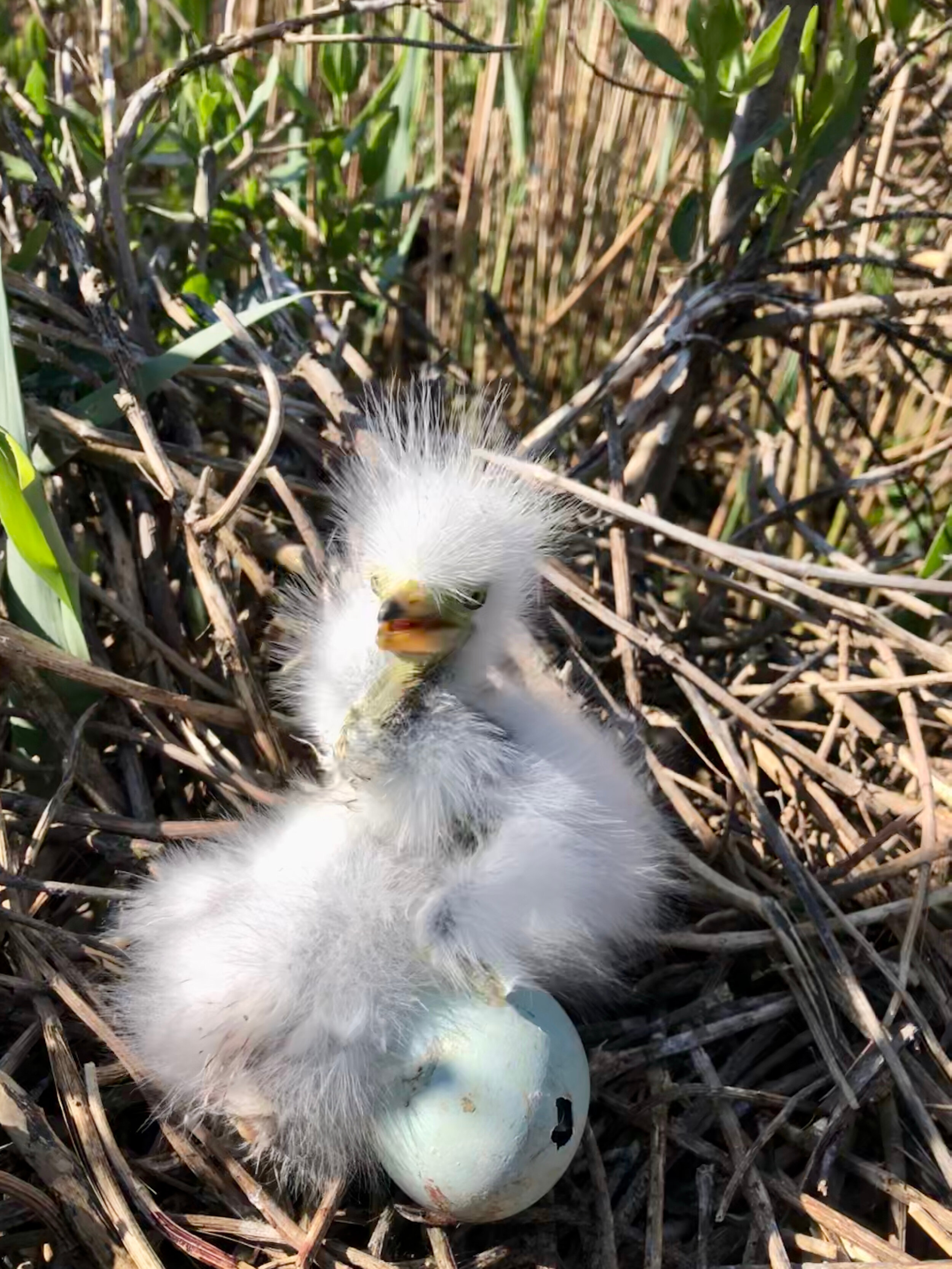
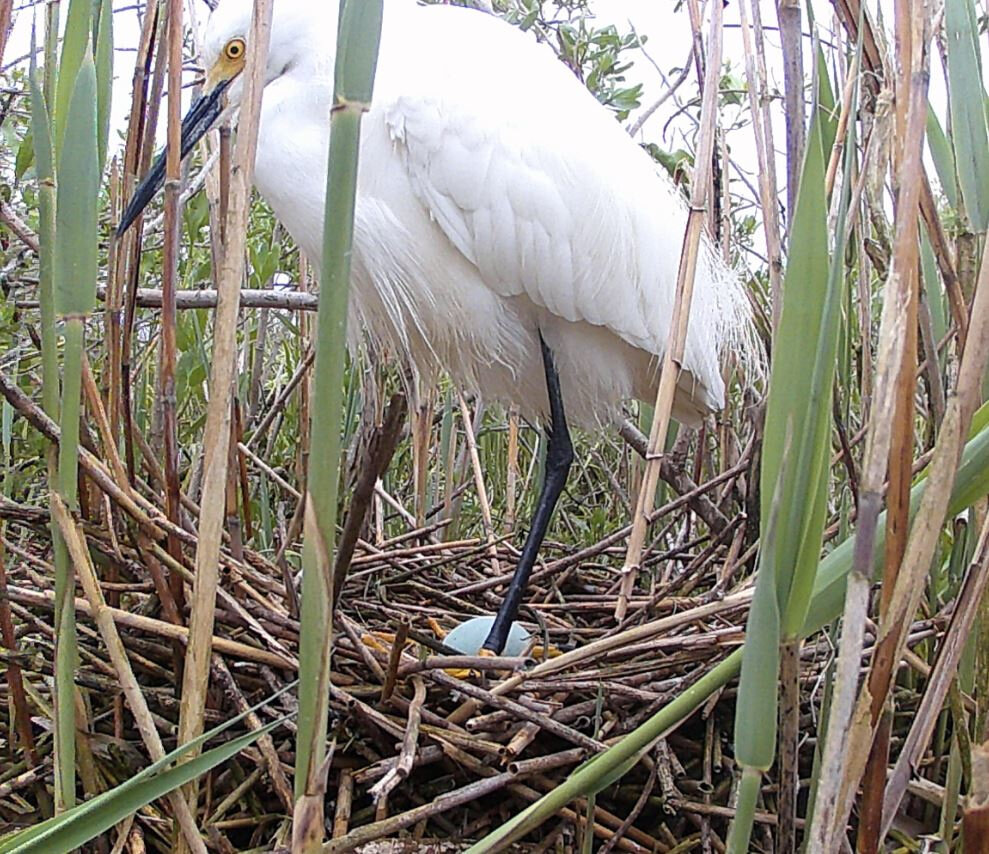
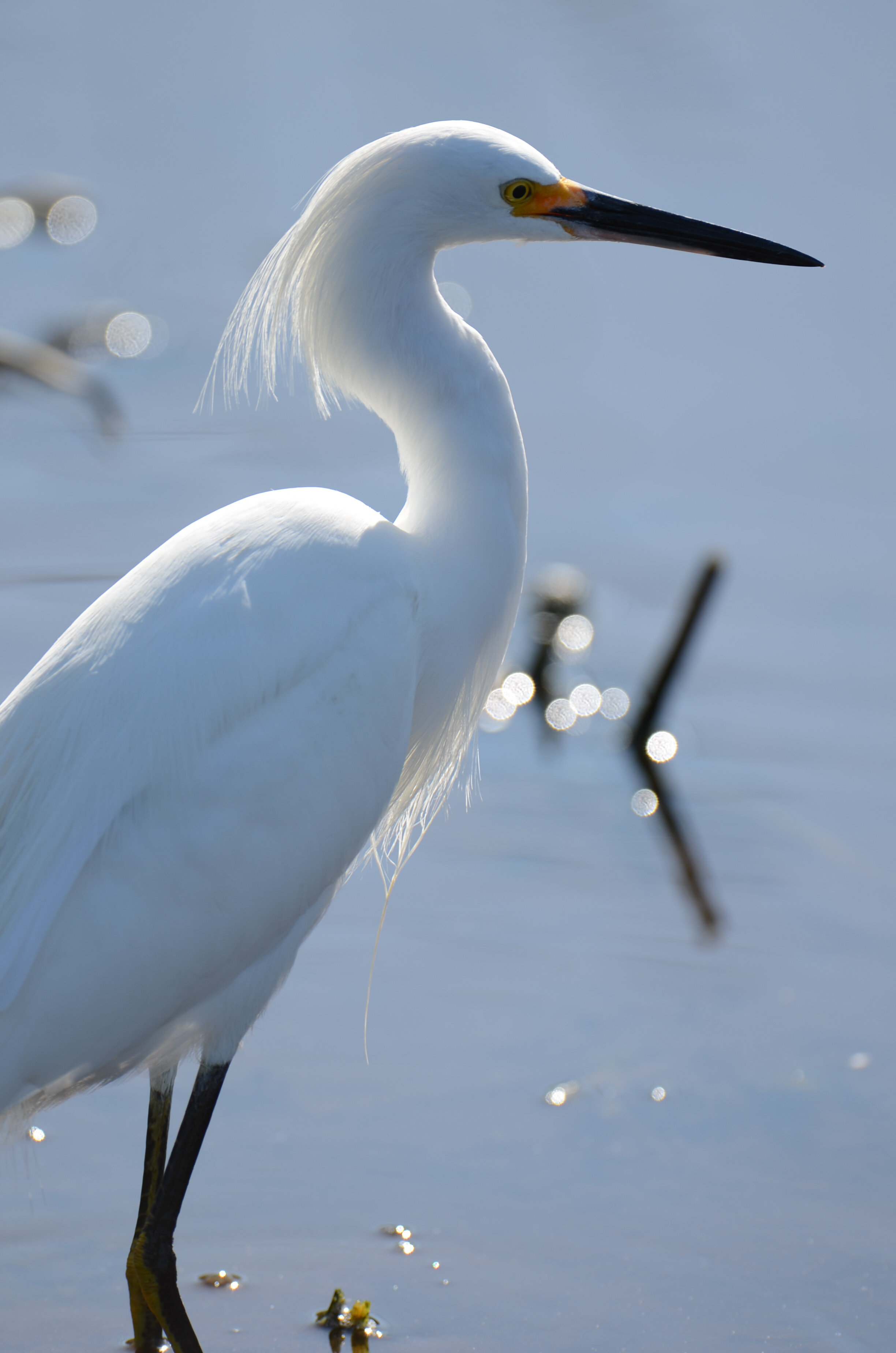
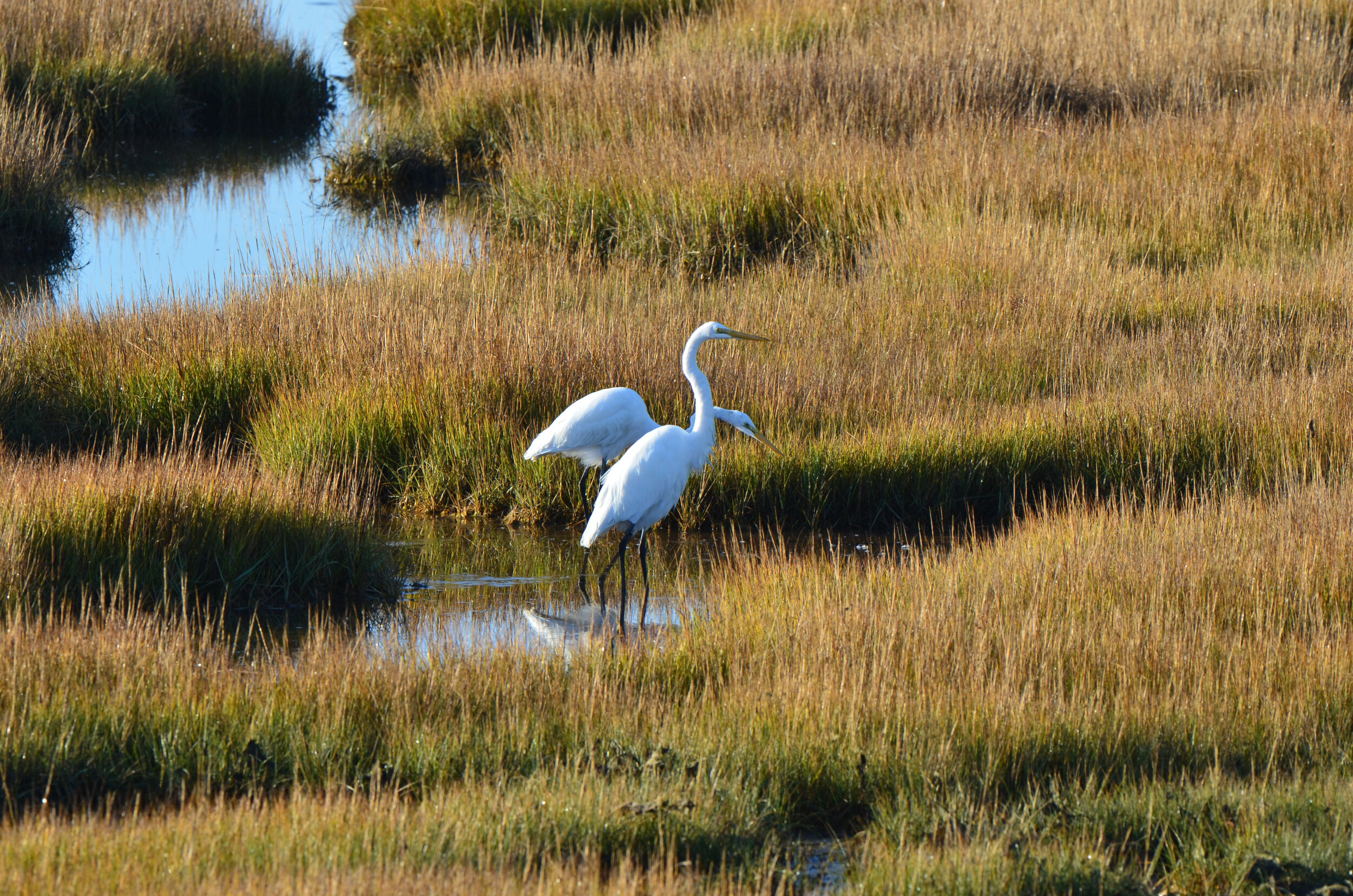
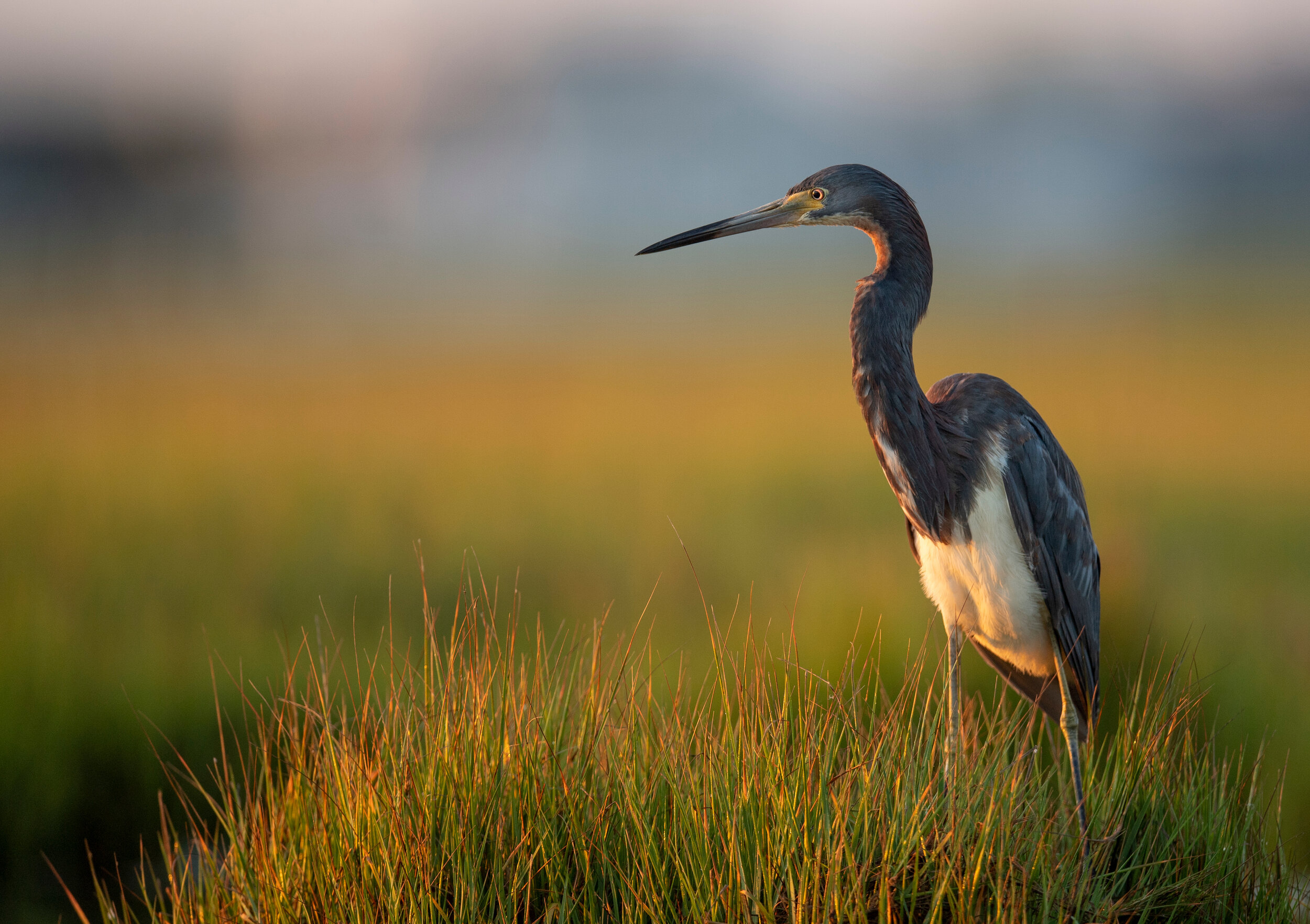
Differences in species abundance and distribution at these locations was documented between nesting seasons. Our initial findings indicate that nest success appears to be related to changes in species abundance at these sites. Researchers believe birds choose different nesting colony sites in different years based on conditions.
To better understand individual survival and return rates at these colonies, banding efforts were initiated in 2020 on great egret adults and chicks with state and federal permits for the work. Great egrets captured on Sturgeon or Gull Island wear bright yellow bands with black codes that are legible from a distance with appropriate optics (binoculars or a spotting scope). Fledging chicks with bands have already been resighted feeding in the marshes near Stone Harbor.
Reports of color-banded birds from the public can help researchers understand movement patterns and survival for the species. If you see a banded great egret, note the color and code on the band, the date/time, and location – and grab a photo if you can. We appreciate any direct reports of our banded birds (scollins@wetlandsinstitute.org), or you can report sightings to the Bird Banding Laboratory (reportband.gov).
Because nesting areas are limited and many of the wading bird species are experiencing declines throughout the coastal New Jersey region, habitat enhancement plans are underway to help offset habitat loss associated with rising sea levels and the sinking of marshes. Beneficial use of dredged material from navigational channel clearing may be used to create suitable nesting habitats for these sensitive nesting wading birds and other marsh-dependent species.
In the spring of 2019, the U.S. Army Corps of Engineers (USACE) Philadelphia District partnered with the State of New Jersey, The Wetlands Institute, and the USACE Engineer Research and Development Center to launch the Seven Mile Island Innovation Laboratory. The initiative was designed to advance and improve dredging and marsh restoration techniques in coastal New Jersey through innovative research, collaboration, knowledge sharing and practical application.
Innovative placement of clean dredged material on areas of Sturgeon and Gull islands are currently underway in an effort to increase elevation in areas of the marsh to promote vegetation growth that may increase available nesting habitat. Research conducted by scientists at The Wetlands Institute helped inform the plans for the habitat improvements by recommending sediment placement elevations suitable for increasing the amount of available wading bird nesting habitat to enhance the abundance and diversity, as well as reproductive success, of these colonial nesting species. Continued monitoring of these areas will help inform adaptive management techniques and wading bird responses to habitat enhancement efforts so that these projects can be most beneficial to the majestic wading birds and they can forever remain icons of the marsh.
To help support research conducted by The Wetlands Institute on wading birds and other conservation efforts targeting sensitive coastal nesting species, you can participate in symbolic adoption programs. By adopting an American oystercatcher, diamondback terrapin or horseshoe crab, you directly help fund critical research and conservation activities through the Research and Conservation Program at The Wetlands Institute. They make great gifts, too. If you’re interested, go to wetlandsinstitute.org/adopt.


